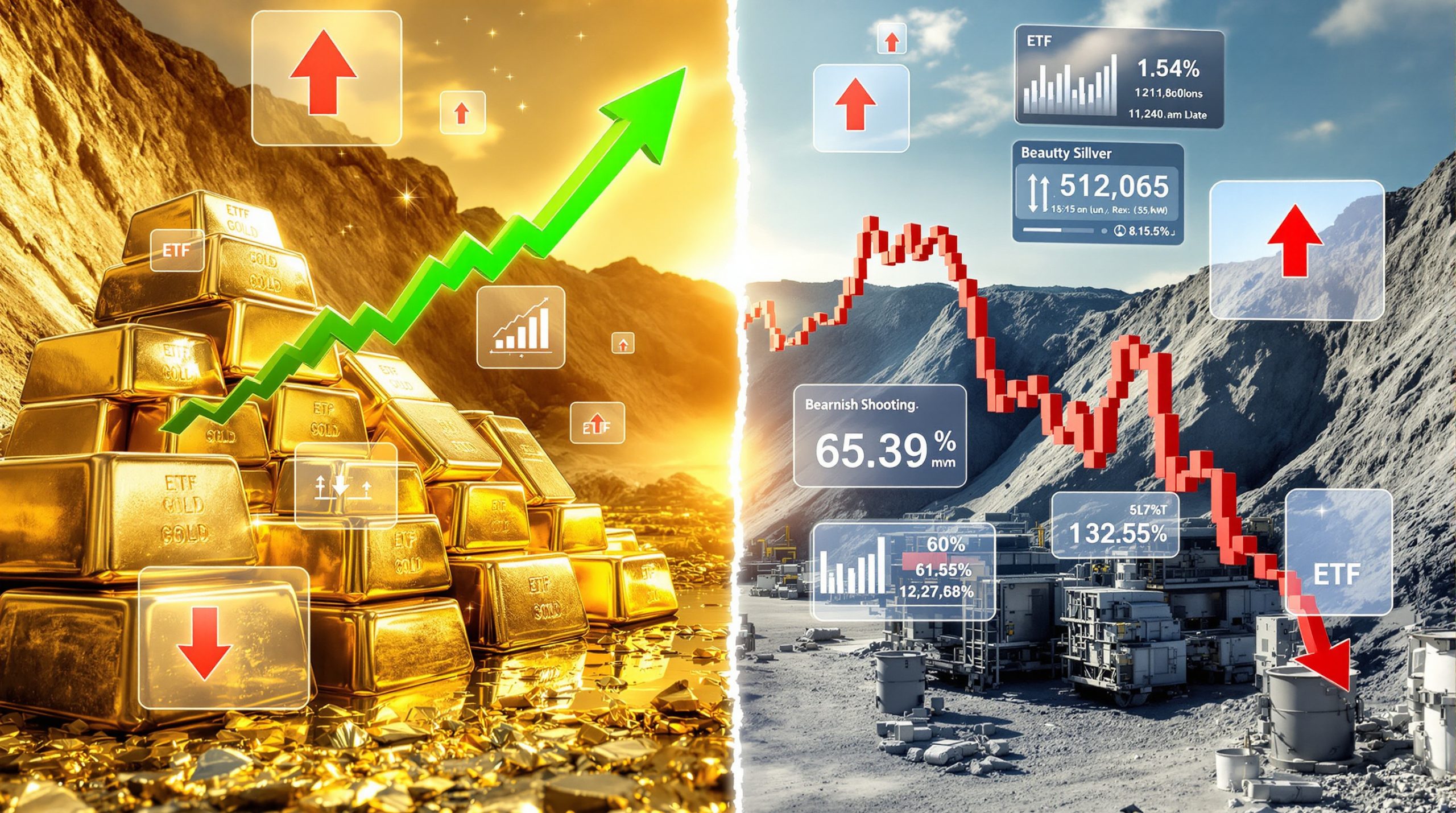Understanding the Manganese Ore Semi Carbonate Index
What is the Manganese Ore Semi Carbonate Index?
The manganese ore semi carbonate index is a price benchmark that tracks the value of semi carbonate manganese ore with 36.5% manganese content. This critical pricing tool serves as the foundation for global manganese trade, providing transparency and standardization in a complex commodity market. Fastmarkets, the leading price reporting agency in this sector, publishes two primary indices that market participants rely on:
- MB-MNO-0002: Manganese ore semi carbonate index, 36.5% Mn, FOB Port Elizabeth, $ per dmtu
- MB-MNO-0003: Manganese ore semi carbonate index, 36.5% Mn, CIF Tianjin, $ per dmtu
These indices represent the two primary trading routes in the global manganese market, capturing both the export price from South Africa and the delivered price to China, the world's largest manganese consumer.
How is the Index Calculated?
The manganese ore semi carbonate index employs a sophisticated methodology based on actual market activity. Rather than relying on theoretical pricing, the index incorporates:
- Real transactions completed between buyers and sellers
- Bids and offers that represent genuine trading interest
- Market assessments from qualified industry participants
Prices are reported in US dollars per dry metric ton unit (dmtu), a specialized unit that represents 1% of manganese contained in a metric ton of ore. For a typical 36.5% manganese ore, the total price per ton would be the dmtu price multiplied by 36.5.
Data collection occurs during structured pricing sessions, where Fastmarkets' analysts gather information according to strict methodological guidelines. Each assessment period generates trade logs that document the deals and price information contributing to the final index calculation.
Recent market activity in April 2025 saw transactions ranging from $3.90-4.05 per dmtu, reflecting current market conditions and the balance between supply and demand fundamentals.
Methodology Behind the Manganese Ore Semi Carbonate Index
Data Collection Process
Fastmarkets employs a multi-channel approach to data collection, ensuring comprehensive market representation. The data collection process includes:
- Direct telephone interviews with market participants
- Email submissions from qualified industry sources
- Digital platform submissions through secure channels
- In-person market intelligence gathering at industry events
Both first-hand transaction data (directly from deal participants) and second-hand information (from market observers) are considered in the assessment. However, direct transaction data carries greater weight in the final calculation.
The rigorous data collection process ensures that indices accurately reflect actual trading conditions. During the April 11, 2025 assessment period, for example, several deals were reported at $3.90-4.05 per dmtu, providing concrete evidence of current market values.
Price Assessment Framework
The manganese ore semi carbonate index follows Fastmarkets' standardized price reporting methodology, which adheres to IOSCO (International Organization of Securities Commissions) principles for financial benchmarks. This framework includes:
- Normalization of data to account for quality variations
- Statistical analysis to identify outliers or anomalous data points
- Weighting systems that prioritize actual transactions over bids/offers
- Transparency mechanisms that allow market participants to understand assessment outcomes
The assessment considers multiple factors that influence manganese ore pricing:
- Transaction volumes (with larger trades carrying more weight)
- Delivery terms (FOB or CIF, with appropriate freight adjustments)
- Quality specifications (focusing on the benchmark 36.5% Mn content)
- Market conditions during the specific assessment period
These factors are combined through a proprietary algorithm that generates the final index value, providing the most accurate representation of current market conditions.
Quality Control Measures
To maintain the highest standards of accuracy and reliability, Fastmarkets implements comprehensive quality control measures:
- Regular audits of the price assessment process
- Prompt correction notices when errors are identified
- Continuous training for price reporters and analysts
- External verification of methodology compliance
The April 11, 2025 correction notice demonstrated this commitment to accuracy when Fastmarkets added a previously missing data point ($3.90 per dmtu deal) to their trade logs. This transparency ensures market participants can trust the integrity of the index.
Fastmarkets' methodology undergoes regular review and consultation with industry participants, ensuring it evolves alongside market practices and remains relevant to users' needs.
Market Significance of the Manganese Ore Semi Carbonate Index
Key Trading Routes
The manganese ore semi carbonate index tracks prices along two critical trading routes:
-
FOB Port Elizabeth (South Africa): South Africa holds approximately 80% of the world's manganese reserves and accounts for over 35% of global production. The Port Elizabeth benchmark represents the export price from this crucial producing region, with the port handling over 6.5 million tons of manganese exports annually.
-
CIF Tianjin (China): China consumes more than 65% of global manganese production, primarily for steel manufacturing (which accounts for approximately 90% of manganese use). The Tianjin price reflects the delivered cost to this major importer, including freight, insurance, and handling costs.
The spread between these two indices (typically $5-15 per dmtu) provides valuable insights into shipping costs, logistics efficiency, and regional supply-demand dynamics.
Price Influencing Factors
The manganese ore semi carbonate index responds to numerous market variables:
- Mining output from major producers (South Africa, Australia, Gabon, Brazil)
- Production disruptions due to weather, labor issues, or equipment failures
- Energy costs, which significantly impact extraction and processing expenses
- Steel production rates, particularly in China's massive manufacturing sector
- Growing demand from the battery minerals dynamics, where manganese is increasingly used in cathode materials for lithium-ion batteries
- Shipping costs and availability, with bulk carrier rates sometimes experiencing 200-300% volatility within a single year
- Exchange rate fluctuations, particularly the USD/ZAR (South African Rand) ratio
- Quality premiums/discounts for variations in manganese content, silica levels, and phosphorus impurities
The complex interplay of these factors creates the market dynamics that the index tracks, providing valuable insights for market participants navigating this landscape.
Transparency in Price Reporting
Transparency is a core principle of the manganese ore semi carbonate index, manifested through:
- Detailed trade logs that document the transactions forming the index
- Published rationales explaining market conditions and price movements
- Clear methodology documents outlining the assessment process
- Timely price corrections when errors are identified
This transparency builds market confidence and facilitates fair, efficient trading by ensuring all participants have access to the same high-quality pricing information.
How to Use the Manganese Ore Semi Carbonate Index
Applications for Market Participants
The manganese ore semi carbonate index serves multiple purposes across the supply chain:
- Contract pricing: Many long-term supply agreements use the index as a floating reference price, adjusting monthly or quarterly based on index movements
- Risk management: Traders and producers use index-linked derivatives to hedge exposure to price volatility
- Market analysis: Analysts track index trends to identify supply-demand imbalances and forecast future price movements
- Investment decisions: Mining companies evaluate capital expenditure based on index projections
- Operational planning: Both buyers and sellers adjust production and purchasing strategies based on index trends
For mining operations, the index provides a performance benchmark against which to measure operational efficiency and profitability. A mine producing at $3.20 per dmtu when the index is at $4.00 would recognize its competitive advantage and potential for market share growth.
Accessing Index Data
Market participants can access the manganese ore semi carbonate index through multiple channels:
- Fastmarkets' comprehensive price data products
- The user-friendly Fastmarkets dashboard interface
- Excel Add-in for integration with existing analytical tools
- API connections for automated data feeds into proprietary systems
- The ores and alloys data package, which includes related ferroalloy prices
These flexible access options allow users to integrate index data into their workflows and decision-making processes efficiently.
Contributing to the Index
Market participants can enhance index accuracy by becoming data submitters:
- Regular submission of transaction data, bids, and offers
- Participation in assessment period discussions
- Feedback on methodology and index performance
Contributors benefit from knowing their market activity is appropriately represented in the benchmark price. Interested parties can contact pricing@fastmarkets.com to join the network of data providers supporting the index's comprehensive market coverage.
FAQ About Manganese Ore Semi Carbonate Index
What does dmtu stand for in manganese pricing?
Dmtu (dry metric ton unit) represents 1% of manganese contained in a metric ton of ore. This unit allows for straightforward comparison between ores of different grades. For example, ore with 36.5% manganese content priced at $4.00 per dmtu would cost $146.00 per ton ($4.00 × 36.5).
The "dry" designation indicates that moisture content has been accounted for, ensuring consistent pricing regardless of water weight variations in shipments.
How often is the manganese ore semi carbonate index published?
Fastmarkets publishes the manganese ore semi carbonate index weekly, typically on Fridays. This frequency balances the need for current price information with sufficient transaction volume to ensure statistical validity.
Special assessments may be issued during periods of extraordinary market volatility or when significant corrections are required, as demonstrated by the April 11, 2025 correction notice.
What is the difference between carbonate and semi carbonate manganese ore?
The distinction between carbonate and semi carbonate manganese ore lies in their mineral composition:
-
Semi carbonate manganese ore contains a mixture of manganese carbonate (MnCO₃) and manganese oxide minerals. It typically has 36-38% manganese content and originates primarily from South Africa's Northern Cape province.
-
Carbonate manganese ore consists predominantly of manganese carbonate minerals with minimal oxide content. These ores generally have lower manganese content (30-35%) but may offer processing advantages for certain applications.
The different chemical compositions affect metallurgical performance, energy requirements during smelting, and ultimately the economics of ferroalloy production. Understanding the geology of ore deposits is crucial for evaluating these differences.
How do FOB and CIF prices differ?
The terms FOB (Free on Board) and CIF (Cost, Insurance, and Freight) represent different points in the supply chain:
-
FOB Port Elizabeth prices reflect the cost at the port of origin, with the seller responsible for delivering the ore to the vessel. Once loaded, all costs and risks transfer to the buyer.
-
CIF Tianjin prices include the additional costs to deliver the ore to the destination port, including ocean freight, insurance, and associated risks during transportation.
The differential between FOB and CIF prices (typically $10-15 per ton) represents the cost of transportation and risk transfer between South Africa and China. This spread can widen during periods of high shipping rates or geopolitical disruption to major shipping routes.
How can I provide feedback on the manganese ore indices?
Feedback is essential for continuous improvement of the indices. Market participants can submit comments, suggestions, or concerns to pricing@fastmarkets.com with the subject heading "FAO: Holly Chant, re: manganese ore indices."
Fastmarkets conducts regular methodology reviews and welcomes industry input on potential enhancements to the price discovery process.
Current Market Trends in Manganese Ore
Recent Price Movements
The manganese market has demonstrated significant dynamics in recent assessments:
- The April 11, 2025 assessment included transactions in the $3.90-4.05 per dmtu range, representing a 7% increase from the previous month
- Year-to-date volatility has decreased compared to 2024, suggesting market stabilization
- The spread between high and low-grade ores has widened to approximately $1.20 per dmtu, indicating quality premiums are expanding
These price trends reflect evolving supply-demand fundamentals, with Chinese infrastructure stimulus programs and post-pandemic industrial recovery driving stronger consumption patterns. Meanwhile, South African producers have maintained disciplined production levels, avoiding market oversupply despite capacity expansion potential.
Relationship to Other Commodity Markets
The manganese ore semi carbonate index exhibits important correlations with adjacent markets:
- Steel production trends show an 87% correlation with manganese prices, with a typical 6-8 week lag
- Energy prices impact production costs, with every 10% increase in electricity rates typically driving a 3-4% rise in manganese ore prices
- Battery material demand has created a new consumption channel, with electric vehicle production growth driving approximately 15% of new manganese demand annually
- Other ferroalloy markets (particularly silicon manganese and ferromanganese) demonstrate strong price correlations, as they represent the primary consumption pathway for manganese ore
Monitoring these interconnected markets provides valuable context for interpreting manganese ore price movements and forecasting future trends. For those interested in investments, a comprehensive mining investments guide can help navigate these relationships.
Regional Market Dynamics
The global manganese landscape features distinct regional patterns that influence the semi carbonate index:
-
South Africa remains the dominant exporter of semi carbonate manganese ore, with approximately 5.2 million tons of annual exports. Production costs in South Africa have increased approximately 12% year-over-year due to rising energy prices and labor costs.
-
China's position as the primary import destination shapes global trade flows, with its steel industry consuming over 60% of globally traded manganese. Recent environmental policies in China have favored higher-grade ores that produce fewer emissions during processing.
-
Emerging production in Ghana, Côte d'Ivoire, and Brazil has introduced new supply sources, though quality variations and logistics challenges have limited their immediate impact on benchmark prices.
-
Australia's high-grade manganese production serves premium markets, particularly in Japan and South Korea, establishing price premiums of 15-20% above the standard 36.5% grade benchmark.
These regional dynamics create a complex global market where production costs, quality differentials, and logistics expenses all contribute to price formation. The manganese ore semi carbonate index distills these factors into a reliable benchmark that serves as the foundation for market transactions worldwide.
The market outlook remains cautiously optimistic, with demand growth projected at 3-4% annually through 2028, driven by both traditional steel applications and emerging battery technologies. Supply expansion appears measured, suggesting a balanced market with moderate price appreciation potential. Investors should consider junior mining strategies and mining feasibility insights when evaluating opportunities in this sector.
Want to Capture the Next Significant Mineral Discovery?
Discovery Alert's proprietary Discovery IQ model instantly identifies potential high-return mineral discoveries across the ASX, turning complex geological data into actionable investment opportunities. Visit the Discovery Alert discoveries page to understand how major mineral discoveries have historically generated exceptional returns for early investors.




